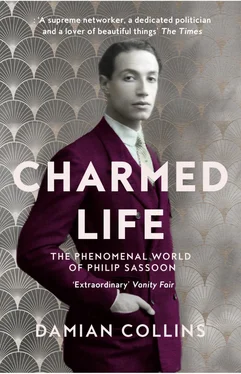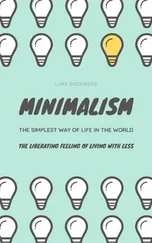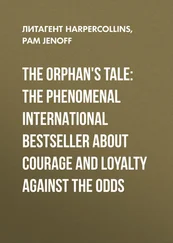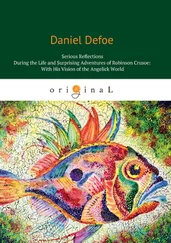Among Eton’s unwritten rules was that, to become one of the club, you first had to become clubbable. Philip sought to gain favour with his contemporaries by throwing generous tea parties in his room, with the help of Mrs Skey, the house matron. fn8There he would amuse his guests with his great gift as a mimic and storyteller, making full use of London gossip from his parents’ social circle. He was an enthusiast of the energetic cross-country sport of beagling, he rowed for his house, and he enjoyed tennis and the school’s traditional handball game, Eton Fives. In his last year Philip would also receive the social distinction of rowing on the Monarch boat in the river pageant for the school’s annual celebrations on 4 June, in honour of the birthday of Eton’s great patron King George III.
Later in life Osbert Sitwell would state in his entry in Who’s Who that he was educated during the Eton school holidays. The education of English gentlemen at that time was traditional, limited in its curriculum and designed to mould and shape, rather than to inspire and encourage. Senior Eton masters responded to such occasional criticism by pointing out that the school regularly produced brilliant and inspirational young men, so it couldn’t be all bad. In the early 1900s, the Eton classrooms were even older and more basic than the boys’ accommodation. The future leaders of the Empire were educated in facilities that any school inspector would today close down on sight without a moment’s hesitation. Junior boys were taught in a dark, low-ceilinged, gas-lit schoolroom, with the view of the master interrupted by blackened oak pillars. It was not heated in winter, and was airless in summer. Their small wooden desks were too narrow to write at, and were carved with innumerable names of generations of boys.
The main subjects in the curriculum were Latin and Greek, with the boys required to spend many hours each week learning off by heart great tracts from Ovid and Horace, Virgil and Homer. History and maths were taught well, but science was limited and any kind of study of English poetry and literature was rare before the students’ final year. For most boys French was largely taught as a dead language, with the students undertaking written translation but not speaking French. Philip, though, was already bilingual and would twice win the school’s King’s Prize for French. As such he was included in the special conversational French classes for exceptional students, given by Monsieur Hua, a bald-headed Frenchman with a black beard who had also been called to Windsor Castle to teach King Edward VII’s grandsons. fn9In the evenings he would invite small groups of the boys to his rooms where they would learn to talk and gossip in French.
If the French language was a gift from his mother, so was Philip’s passion for art. Art education at Eton was generally limited to the lower boys taking drawing lessons with old Sam Evans, who would direct the pupils to sketch copies of plaster casts of classical figures. Philip took up these classes but was more fortunate to come to the attention of Henry Luxmoore, the ‘grand old man’ among Eton’s masters and a ‘lone standard bearer for aesthetics’. 12Philip would join small groups of boys for Sunday teas with Luxmoore in the famous garden he had created at Eton, where they would discuss art. These informal sessions for students whom Luxmoore regarded as potential kindred spirits was the only education the boys had in the works of the great artists. Philip could contribute with knowledge acquired from his family’s extensive collection, and of course drop into conversation the news that John Singer Sargent was painting his mother’s portrait.
Having grown up around beautiful things it is not surprising that he should have developed a strong appreciation of the value of art for its own sake. At Eton, Luxmoore would help to develop Philip’s intellectual curiosity in the attempts of great artists to understand and capture beauty. Luxmoore’s own particular interest was in the works of the seventeenth-century Spanish painter Bartolomé Murillo, whose realist portraits of everyday life, including flower girls, street urchins and beggars, may have influenced Philip’s own later interest in the English ‘conversation piece’ paintings of Gainsborough and Zoffany, depicting the details of life in the eighteenth century. Murillo’s work also showed that real beauty could be found anywhere, not just in great cathedrals and palaces. Luxmoore’s passion for the art of gardening was something else that Philip would share in adult life, with both men appreciating its power to define space and create an experience of beauty. fn10
When Luxmoore died in 1926, the Spectator magazine recalled that ‘his knowledge and sense of art and architecture made him an arbiter of taste. But his most abiding mark will be on the characters of innumerable boys and, we venture to say, of masters too. He inspired high motives and principles by expecting them. No one with a mean thought in his heart could come before Mr Luxmoore’s eye and not feel ashamed.’ 13Philip Sassoon’s education in aesthetics was energetic rather than passive. He developed not just an appreciation of art, but an idealized vision for life. He believed, as Oscar Wilde did, that ‘by beautifying the outward aspects of life, one would beautify the inner ones’, and that an artistic renaissance represented ‘a sort of rebirth of the spirit of man’. 14Eton suited Philip Sassoon, because despite the strictures of Edwardian English society it was a place where ‘you could think and love what you liked; only in external matters, in clothes or in deportment, need you to do as others did’. 15
Philip was not one of Eton’s star scholars; those prizes were taken by boys like Ronald Knox and Patrick Shaw Stewart, who would go on to scale the academic heights at Oxford. He sat the examination for Balliol College, which had something of a reputation as an academic hothouse, but was not awarded one of the closed scholarships that were at Eton’s disposal. Instead he took the traditional path to Christ Church, to read Modern History.
Leading statesmen like William Gladstone and the Marquess of Salisbury had previously made the journey from Eton to Christ Church, but it also had a reputation as the home of Oxford’s more creative students. It had been the college of Lewis Carroll and of the great Victorian art critic John Ruskin; and Evelyn Waugh would later choose Christ Church’s Meadow Building, constructed in the Venetian Gothic style, as the setting for Lord Sebastian Flyte’s rooms in Brideshead Revisited , published in 1945. Fortunate students living in the beautiful eighteenth-century Peckwater Quad could have a fine set of high-ceilinged rooms in which to live and entertain with style.
Life at Oxford in those seven years before the First World War is now seen as the high summer of the British Empire, coloured by the glorious flowering of a lost generation. It is a view inevitably shaped by the immense sense of loss at the deaths of so many brave and brilliant young men in battle. Oxford was still governed, though, by a pre-First World War social conservatism and, as at Eton, Philip could not help being somewhat ‘other’. It was less than forty years since the university had first accepted students who were not members of the Church of England, and he was one of no more than twenty-five undergraduates of the Jewish faith, out of a total of three thousand at the university.
Philip had grown in confidence and stature since his early Eton days. He was sleek, athletic and always immaculately attired in clothes tailored in Savile Row. He continued to enjoy robust outdoor pursuits like beagling and was an avid swimmer and tennis player. He went out hunting with the Heythrop and Bicester, and members recalled that he always ‘looked like a fashion plate even in the mud’. 16Philip was not a varsity sportsman, so would not earn the Oxford Blue that would guarantee acceptance into Vincent’s Club, but he was invited to join the renowned dining club, the Bullingdon, which was then popular with Old Etonian undergraduates who hunted.
Читать дальше












